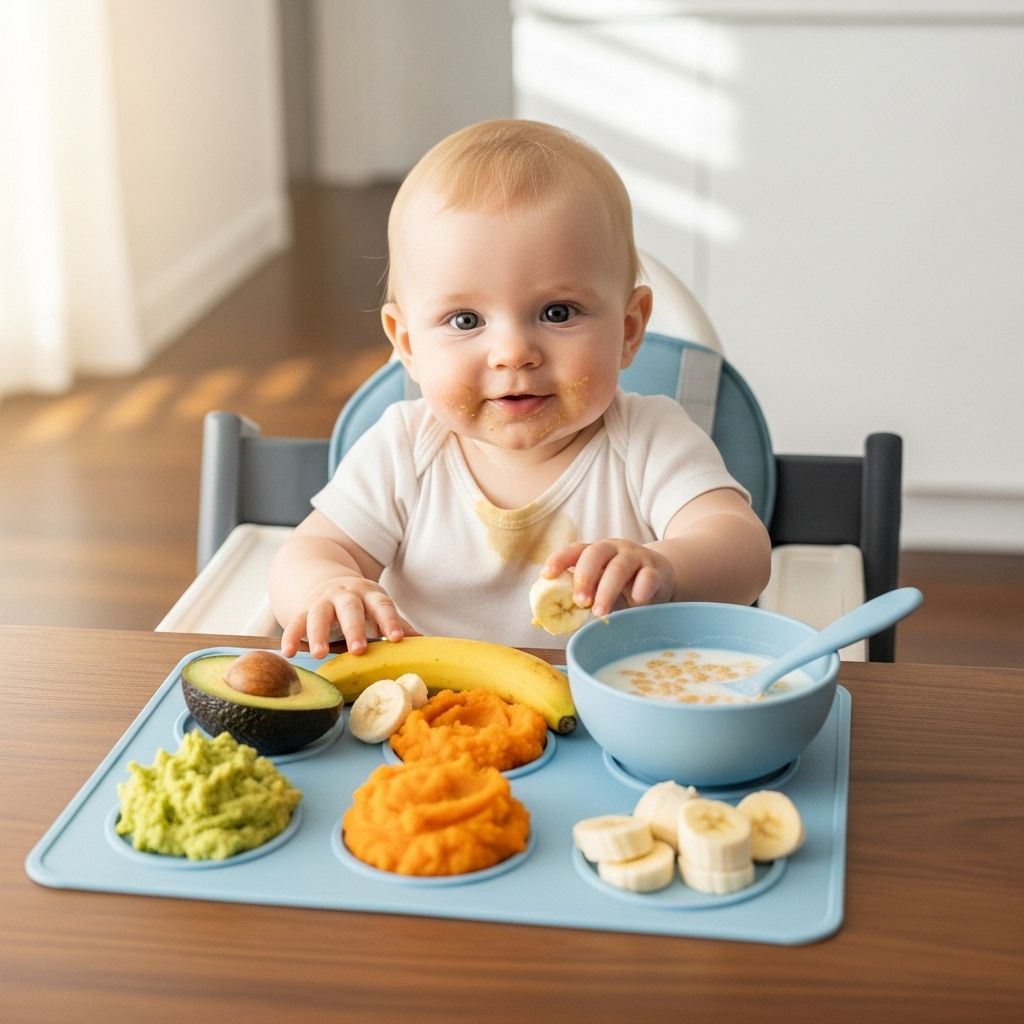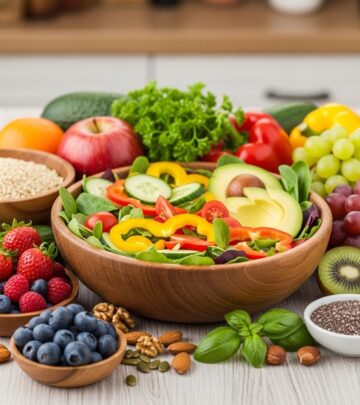Essential Dos and Don’ts for Transitioning Your Baby to Solid Foods
A comprehensive guide to safely and confidently introducing your baby to solid foods amid common concerns and misconceptions.

Introducing solid foods is an exciting milestone in your baby’s development, but it also comes with many questions. Understanding the right approach can help you foster healthy eating habits and make this transition safe and enjoyable for both you and your child. This guide covers the essentials: signs of readiness, recommended foods, best practices, and common mistakes to avoid.
Understanding When Your Baby Is Ready
Knowing when to start offering your baby solid foods is crucial. Most experts—including the American Academy of Pediatrics (AAP)—recommend waiting until your baby is about 6 months old. However, age is just one factor; readiness depends even more on your baby’s development. Look for these signs:
- Sitting Up Independently: Your baby can sit in a high chair without assistance and hold their head steady. This helps prevent choking and ensures they’re physically ready for eating.
- Interest in Food: Intense curiosity about what you and others are eating, such as staring or reaching for your food during mealtime.
- Loss of Tongue Thrust Reflex: The early infant reflex of pushing food out with their tongue decreases, allowing them to move food to the back of the mouth and swallow more effectively.
- Bringing Hands to Mouth: Improved hand-to-mouth coordination indicates readiness for self-feeding behaviors.
If your baby does not show these signs yet, continue exclusive breastfeeding or formula feeding and try introducing solids again after a little time has passed.
The Dos: Recommended Steps for a Healthy Transition
1. Start with Simple, Single-Ingredient Foods
Introduce one new food at a time and wait for two to three days before trying another. This spacing allows you to monitor for any allergic reactions. Some recommended early foods include iron-fortified single-grain baby cereal, pureed meats, mashed fruits like banana or avocado, and pureed vegetables such as sweet potato or carrot.
- Iron-Rich Foods: Iron is essential after six months, so include pureed meats, beans, and iron-fortified cereal.
- Introduce Vegetables and Fruits: Order does not matter, but do focus on variety over time.
2. Start Gradually and Be Patient
Offer solids after a small amount of breast milk or formula—your baby will be less frustrated if they are not starving. Begin with a tiny taste, such as half a spoonful. Do not worry if they reject or spit out the first attempts; this is a big change, and most of the first few meals will end up on the bib, tray, or floor. It may take 10-15 tries for your baby to accept a new texture or flavor, so continue offering.
3. Make Meals Safe and Enjoyable
- Proper Positioning: Seat your baby upright in a high chair (always use the safety strap).
- Supervise Mealtimes: Never leave your baby unattended while eating.
- Use the Right Texture: All foods should be soft, well-cooked, pureed, or mashed to prevent choking.
- Encourage Exploration: Let your baby touch and play with new foods to engage all their senses.
- Respond to Cues: Respect signs of hunger and fullness. If your baby turns away or closes their mouth, don’t push more food.
4. Offer a Wide Variety of Foods
Introducing a diversity of foods promotes acceptance and reduces picky eating later in childhood. Once single-ingredient foods have been tolerated, you can combine them for new flavor experiences. If a mashed carrot is refused, try it again later or in combination with another familiar taste. The goal is repeated, positive exposure to healthy foods.
5. Consider Baby-Led Weaning
Some parents opt for baby-led weaning, where babies are offered soft finger foods they can grasp and feed themselves, rather than being spoon-fed purees. This approach fosters independence and allows babies to control intake. It is safe to try this method if your baby can sit unsupported and has mastered hand-to-mouth movement. Always cut foods into manageable pieces and avoid choking hazards.
The Don’ts: Common Pitfalls to Avoid
1. Do Not Rush the Process
Avoid starting solids before your baby exhibits signs of readiness, regardless of age. Introducing solids too early (before four to six months) increases the risk of choking and does not improve sleep or growth outcomes.
2. Do Not Add Solids to the Bottle
Never put cereal or pureed foods in your baby’s bottle. This practice can lead to overfeeding, increase the risk of choking, and may promote unhealthy weight gain without teaching the experience of eating from a spoon.
3. Do Not Force Feed
If your baby refuses a food, do not insist. Repeated, relaxed exposure is key. Babies may need many encounters with a new food to learn to like it.
4. Avoid Salty, Sugary, or Highly Processed Foods
- No honey before age 1 due to the risk of botulism.
- No cow’s milk as a main drink before age 1, though dairy in small amounts (in cooking or yogurt) is acceptable from around 8 months.
- No added salt or sugar: Baby’s kidneys are still developing, and added sodium or sugar sets up unhealthy taste preferences.
- No choking hazards: Avoid whole grapes, popcorn, hard chunks of fruit or veggies, nuts, hot dogs, and sticky foods like peanut butter.
5. Do Not Ignore Allergic Reactions
Be vigilant for signs of food allergies, particularly after introducing common allergens (such as eggs, dairy, peanuts, wheat, soy, fish, and tree nuts). Symptoms can include rash, vomiting, diarrhea, or trouble breathing. If a reaction occurs, seek medical attention immediately and avoid the food until you consult your pediatrician.
Sample Introduction Timeline
| Age (Months) | Milestones | Suggested Foods | Feeding Tips |
|---|---|---|---|
| 0–6 | Exclusive breast milk or formula | None | Watch for readiness cues after 4 months |
| 4–6 | Signs of readiness may appear | Iron-fortified infant cereal, pureed fruits and veggies | Textures must be thin and smooth |
| 6–8 | Improved head control, sitting unaided | Pureed or mashed meats, beans, small amounts of yogurt, soft fruits | Increase texture as tolerated, begin finger foods if ready |
| 8–12 | Eating with pincer grasp, chewing | Chopped cooked veggies, small pasta, soft cheese, toast strips | Offer water in a cup, introduce more variety |
Addressing Common Concerns
Will starting solids help my baby sleep better?
There is no evidence that early introduction of solids helps babies sleep through the night. Hunger is rarely the culprit in night waking for infants—sleep patterns mature with age, not with diet changes.
What if my baby gags or spits up solids?
Gagging is a normal part of learning how to eat and is not usually dangerous. Ensure textures are appropriate and avoid hard chunks. Spitting food out can signal that your baby isn’t ready for that texture or flavor, or simply needs more time to adjust.
Practical Tips for Stress-Free Feeding
- Maintain a positive atmosphere: Smile, make eye contact, and praise your baby’s attempts at trying new foods, even if they’re messy or hesitant.
- Keep meals brief: About 10–15 minutes is typical. Stop if your baby gets fussy or disinterested.
- Allow self-feeding when possible: Encourages independence and coordination; offer safe finger foods as skills develop.
- Don’t compare: Every baby develops unique preferences and paces. Avoid pressure or negative reactions.
Red Flags: When to Call the Pediatrician
- Consistent refusal of all solids after several attempts over weeks
- Signs of allergy after trying new foods
- Persistent vomiting, diarrhea, or constipation linked to feeding
- Poor weight gain or weight loss
- Concerns about choking, swallowing, or delayed physical milestones
Frequently Asked Questions (FAQs)
Q1: Can I begin solids before my baby turns six months?
A: Most babies are ready at six months, but readiness signs are more important than age. Consult your pediatrician if considering earlier introduction.
Q2: Should I give juice or water with meals?
A: Small amounts of water can be offered with meals starting at six months, but avoid juice due to its high sugar content. Breast milk or formula should remain the primary source of nutrition until age one.
Q3: How do I introduce common allergenic foods?
A: Once a few fruits and vegetables are tolerated, introduce common allergens (e.g., egg, peanut, fish) one at a time and watch for reactions. Do not delay introduction unless medically indicated.
Q4: What if my baby refuses vegetables but eats fruit?
A: This is normal as babies often prefer sweeter tastes. Continue offering vegetables repeatedly in different ways without pressure; acceptance grows with familiarity.
Q5: Is organic baby food necessary?
A: Not required. Both organic and conventional baby foods are safe; focus on variety and proper preparation over labeling.
Takeaway
Your baby’s journey to solid foods should be joyful, safe, and tailored to their unique signals and needs. Introducing a wide variety of safe, wholesome foods builds the foundation for lifelong healthy eating habits.
References
- https://www.thebump.com/a/baby-solid-food-guide
- https://kidshealth.org/en/parents/feed47m.html
- https://publichealth.jhu.edu/2019/current-guides-for-starting-infants-on-solid-food-may-lead-to-overfeeding
- https://lowcountrylittles.com/blogs/palmetto/ultimate-weaning-guide-tips-tricks-must-haves
- https://www.sciencedaily.com/releases/2019/07/190725150359.htm
- https://www.nih.gov/news-events/news-releases/guidelines-introducing-solid-foods-infants-may-lead-unhealthy-weight
Read full bio of medha deb












